Heating bills won't scare you anymore! What is the most economical way to heat your home?
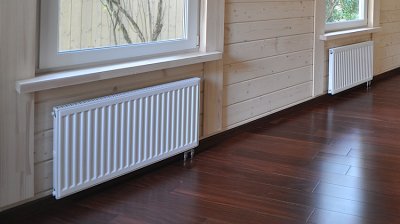
Heating is the single largest energy expense in most homes. It accounts for from 35 to 50% annual electricity bills.
The most effective way to reduce the size of these bills is to reduce your heating energy use.
The heating system replaces the heat that is lost through the walls, windows, floors and ceilings of your home.
Content
Methods of economical heating of a private house
The amount of energy required to replace lost heat, depends on four factors:
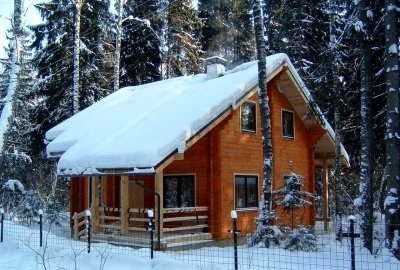
- location of the house (in colder regions the consumption is higher);
- building dimensions;
- energy efficiency of the house;
- energy efficiency of the heating system.
The first factor is the main one, but it does not depend on you. The colder the weather outside, the more energy is required to maintain a comfortable temperature inside.
Important and house size. A spacious room contains a significant volume of air that needs to be heated. Therefore, a large house requires large heating costs.
A great way to save energy and money is to improve the energy efficiency of your home and heating system. There are several ways to do this:
- choose the optimal type of heating system;
- improve facade insulation;
- repair the heat distribution system (ducts and pipes);
- Eliminate heat leaks through doors, windows and various cracks.
How to insulate a facade
Insulation of the facade in the form of its insulation is the main protection of the house from heat loss through the building body. Therefore, it is very important to insulate the largest part of the house - the facade walls. Insulating materials reduce heat loss by providing a barrier between the inside of the house and the significantly different temperature outside.
Different types of insulation are used in homes. The most common of them are - polyurethane foam, polystyrene foam and fiberglass.
Polyurethane foam
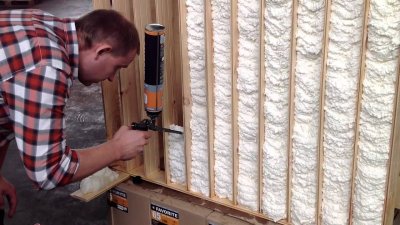
Foam insulation is spray or injection foam.
- Spray foam in a liquid state is distributed over the open spaces of the new house structure. After this, the foam expands, fills the cavity and hardens.
- Injection foam is pumped into existing cracks, crevices or other voids in the walls. This makes such polyurethane foam indispensable for repairing the insulation of existing houses.
Polystyrene foam
There is polystyrene foam with open or closed cells.
- Open cell polystyrene foam very light and flexible. When polystyrene foam expands, the gas inside the cells escapes through holes in the cell wall. This process creates a lightweight, flexible form that hardens as it hardens.
- Closed cell polystyrene foam has a much denser and heavier structure. It forms a dense surface that is more resistant to weathering and temperature changes.
Fiberglass
Fiberglass is made from soda, limestone, sand, and crushed glass and comes in slabs or rolls. It is placed in unfinished walls, floors, and ceilings between studs, joists, and beams. Because of its fibrous structure, this material is excellent keeps air inside and prevents heat loss.
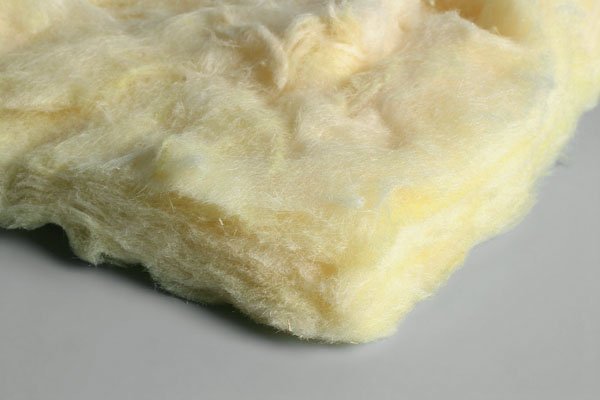
Photo 1. A piece of fiberglass. It is one of the most popular materials for home insulation.
Efficient boilers for space heating
In order to heat your home efficiently and economically, you need tochoose quality heating equipment. Most often, boilers are used in this role.
Condensing gas
Operation of a boiler with condensing gas allows you to use all the energy released during gas combustion. All boiler systems distribute heat into hot water, which releases heat as it passes through radiators or other room appliances throughout the home. The cooled water then returns to the boiler to be reheated.
In a conventional boiler, the heating system circuit is heated by the combustion of natural gas. Condensing boiler uses the energy available in the products of gas combustion. These products contain water vapor. The vapor, cooling down, condenses and releases heat. The water in the heating circuit is heated by this energy. The water released during condensation (condensate) is evacuated through the wastewater network.
Important! Natural gas is the most affordable energy source. Therefore, the cost of operating a condensing boiler will be the most profitable.
This boiler is easy to operate, consumes less fuel than a standard gas boiler, and has an efficiency often exceeding 100%.
Pyrolysis
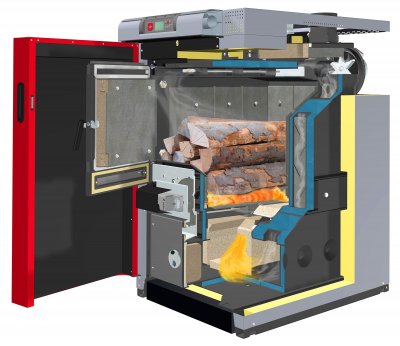
The pyrolysis boiler operates on solid fuel. In this case, not only the wood itself burns, but also the gases that are released in the process.
Therefore, the efficiency of such boilers is up to 90%. Firewood or special pellets made from dried biomass burn in one chamber, releasing pyrolysis gas.
Under the influence of high temperature, the gas enters another chamber through a special nozzle, where it burns, mixing with oxygen.
The thermal energy released in this process is much higher than in conventional boilers, and the burning time is much longer. That is why pyrolysis boilers are called long burning boilers.
Such gas generator boilers do not depend on the presence of a main gas pipeline and can be maximally efficient use purchased fuel.
Solid fuel
The simplest boiler is a wood or coal boiler. completely autonomous, and does not require connection to a gas pipeline or electrical network, nor the cost of paying for gas and electricity. All that is needed is a standard body consisting of a firebox (or combustion chamber) and an ash pit, and regular firewood.
Firewood is burning in the firebox thanks to the air supplied through the blower. This releases thermal energy. It heats a steel or cast iron coil-shaped heat exchanger located in the firebox and increases the temperature of the coolant. Hot water gives off heat as it passes through the home's heating system. The cooled water then returns to the boiler for reheating.
Electric boiler
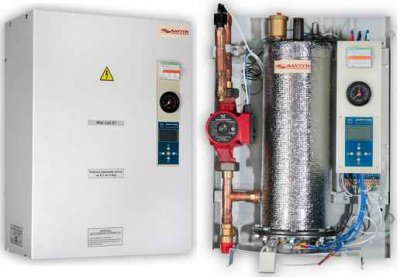
Operation of an electric boiler similar to the operation of other boilers: The water in it is heated and then circulates in the heating system circuit and radiators.
Heating of water in such boilers occurs using electric currentIt provides high performance and excellent heating speed.
In addition, installation of an electric boiler does not require large expenditures for the installation of expensive equipment, the presence of a chimney and a large room.
Warm floor
Underfloor heating is the most old form of central heating. Even the Romans used a system of underfloor heating, which warmed buildings and baths. Today's underfloor heating system is becoming increasingly popular in Russia.
Underfloor heating is a system that heats a house through a heated floor covering. There is two types of such a system. In the first type warm water heats the floor, passing through a pipeline laid under the floor (a "wet" system). In the second, the floor becomes warm using electric coils, located underneath it (“dry” system).
The concrete floor slabs heat up and heat is radiated from under the floor into the room. "Wet" system can be connected to a gas boiler for heating waterThis will help to save significantly on cheap gas fuel.
Attention! For this type of heating large-scale construction work is required. Therefore, it is best to install it during the construction of the house.
Infrared heating is one of the most economical methods
The infrared spectrum is part of the electromagnetic spectrum. This form of radiated heat is the most basic. It is the same 100% natural type of heat, which the human body emits and absorbs daily.
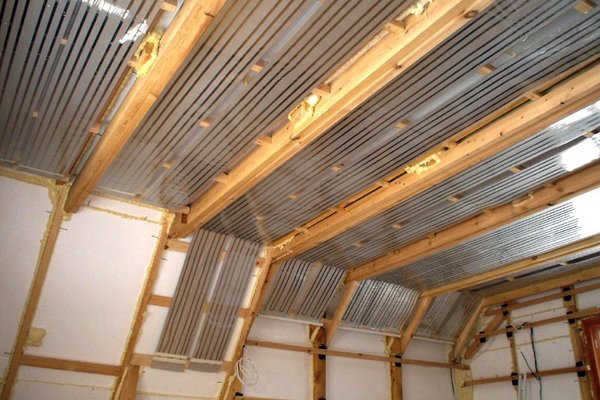
Photo 2. Installation of infrared heaters under the roof of the house, this installation method allows you to completely warm up the room.
The peculiarity of infrared radiation is that it heats up objects and people in its path. without heating the surrounding space. This is what infrared heating does. much more efficient than convectionConvective heat, which is emitted by conventional radiators and central heating systems, only heats the air.
Warm air is distributed throughout the room, circulating uncontrollably, and leaves objects in the room cool. Infrared heating radiates direct heat and warms everything. This type of heating brings long-lasting, comfortable warmth to the home, consuming less energy.
Infrared heaters can provide Directed heat anywhere, regardless of distanceThis means that there is no need to spend electricity on heating a room of any, even the largest area, and heat is not lost due to air circulation.
Solar collectors - cheap and economical
Solar collectors use the heat of sunlight to heat water, which is then directed into the building. They consist of a panel of heat-absorbing material into which heat is pumped mixture of water and antifreeze to collect heat. This mixture then heats the water in the hot water system, so solar collectors must be integrated into the existing heat distribution system.
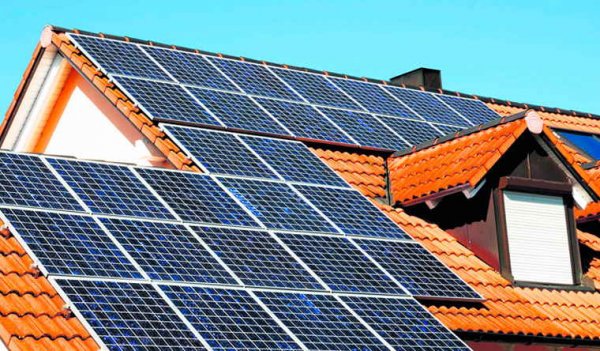
Photo 3. Solar collectors installed on the roof of the house. The devices must be placed at a certain angle.
Such heating systems can be useful not only in warm climates. Even a small increase in water temperature dramatically reduces the amount of energy needed to heat it. Solar collectors create favorable conditions for the start of any heating systems. This means that less energy is used overall.
How to Heat a House with Heat Pumps in Winter and Summer
Heat pumps are devices for transferring warm air using an electric pump. In winter, warm air separates from the cold outside and is distributed inside the house. In summer, the heat pump reverses the flow direction, and warm air from the room is carried outside. Heat pumps use forced air systems to distribute heated air throughout the house.
Exists two types heat pumps.
Geothermal
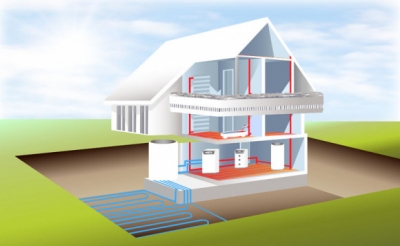
Geothermal pumps draw warm air from a pipe located underground. The temperature in such a source stable all year round.
In geothermal pumps, the collector loop is a coil buried in long, shallow holes or in vertical wells.
The efficiency of heat pumps is often sometimes more than 100%, because electricity in them is used not to create heat, but to move it.
Air
Air source heat pumps use outside air as a heat source in winter and as a heat sink in summer. These heat pumps look and are installed just like a central air conditioner.
Useful video
Watch the video, which tells about an effective way of heating a country house in the Finnish style.
Conclusion
Heating our homes is expensive and gets more expensive every year. As costs rise, each of us looks for more affordable heating and insulation options. Fortunately, there are many such options. Choose carefully, combine different types and systems of heating and you will be able to choose the best option for yourself in terms of price and efficiency.








